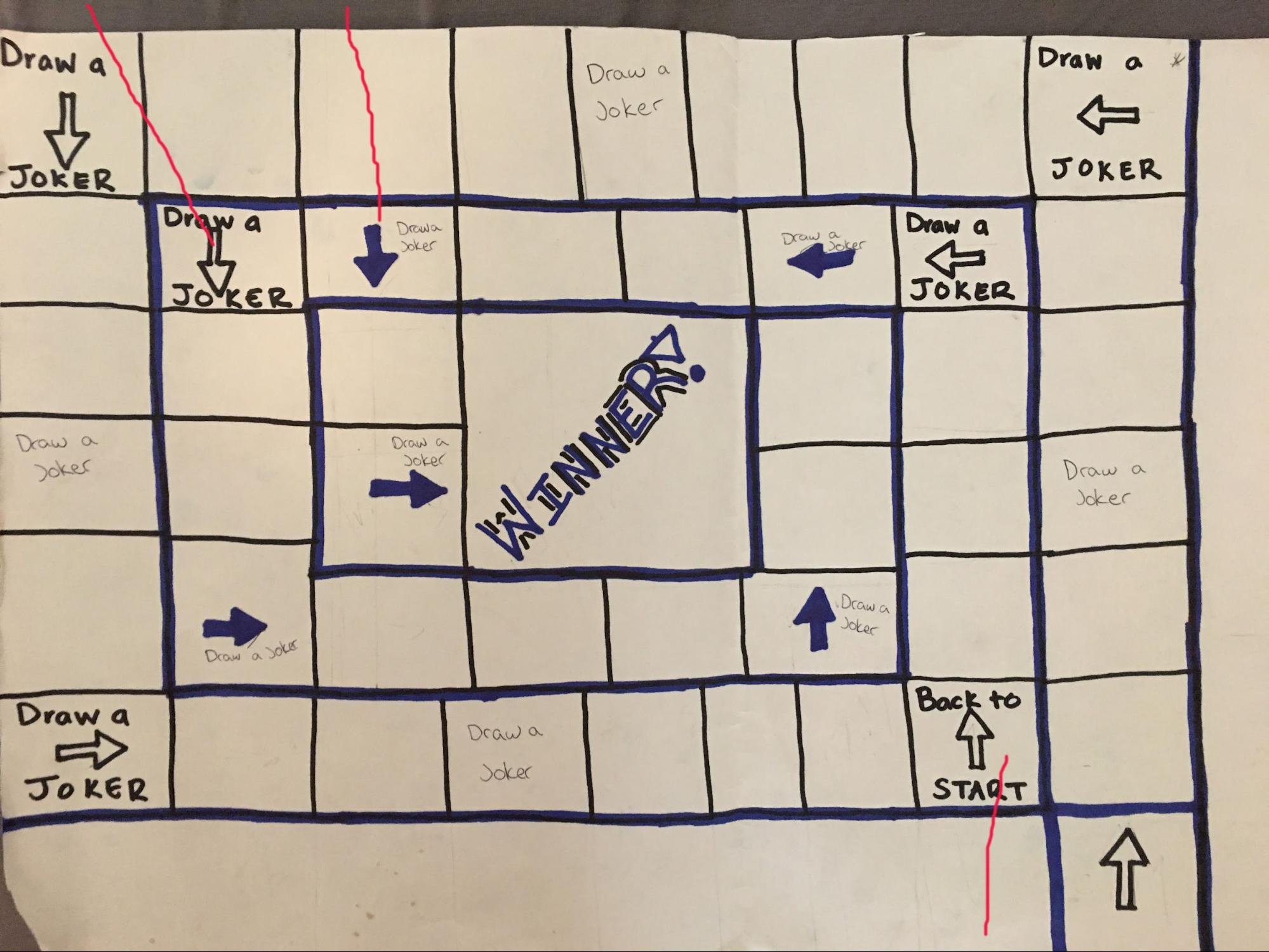Finish It! Board Game
Finish It! is a game that was developed by Ariella St. Rose, Kelsey Vonk, and Nigia Greene. It is a competitive board game that encourages players to beat each other to the finish line. The game involves the use of ‘special’ cards to stunt each other’s advancement, player pieces to move across the board, and Joker cards to add an element of humor and misfortune to the game. The basic concept of the game remained the same throughout the course of its development and testing, with minor tweaks added during the trial period.
This game was created during my second year of university.
Method
-
The objective of the game is to win the race. We wanted to create a competitive and skill-based experience with elements of chance and uncertainty. As designers, we wanted to create a game that has a large social element to it. We wanted our players to interact with each other in a fun and light-hearted manner. To accomplish this, we utilized Joker cards that had actions the players had to perform that could provide a point of conversation for all of the players. They can bond over and joke about these cards and their effect on the game. It is also difficult to win the game so this prolongs player interactions and conversations.
-
During the first play test, we set up the board and had everyone choose their desired player pieces. Originally, we had intended for the game to only be played by a maximum of four people, but everyone wanted to play so we decided to test out having seven people. The added amount of people didn’t affect the game in a negative manner so we adjusted our game rules to involve a maximum of eight players (we had a total of eight player pieces anyways). The youngest player dealt seven cards to each player and the oldest player made the first move. The game play went smoothly overall, it took players a little bit of time to remember all the functions for each of the special cards but they were able to remember them quickly. The players also stated that they enjoyed the experience of playing the game. One criticism we did receive was of a person telling us that we should have Joker cards that affect the state of the game. At the time, our Joker cards were only humorous, they had no direct impact on the game play itself. Once we received this feedback, we made sure to change the stack of of Joker cards. Now, we have a mixture of humorous cards and cards that can affect the game play. For example, there are cards that can move a player’s piece back a couple of spaces. This game play inspired feelings of competitiveness and that caused each player to play in a way that benefited themself the most.
The second play testing session went extremely well. We played with seven players again and everyone became invested with the game. Again, it didn’t take people too long to remember all of the functionalities of the special cards or the game rules. There was some confusion with how the board was drawn at first, but people quickly caught on. The players enjoyed the use of cards to perform actions. The only problem that a person had was that because they can choose which cards they want to play, they can count the amount of spaces that would make them land on one of the Joker squares and avoid that area. To counteract that problem, we added more Joker spaces to the board to increase the player’s likelihood of having to play a card that made them land on the square. Specifically, they told us we could add more Joker spaces to the area that is closest to the winning space (finish line). Overall, they stated that the area closest to the finish line needed more action.
The third play testing was an absolute success. We implemented changes to the game based upon the feedback we had received. We added more Joker squares to the area around the winning space. This allowed players to remain excited about the game and give them more actions to complete as they got closer to winning. During this gameplay, we discovered that our game had a large social aspect to it. The game wasn’t so much about winning as it was about interacting with the other players about the game and about the Joker cards in particular. For example, one Joker card had a player come up with a story about her cat every time it was her turn to play. Other players would joke with her and ask her questions about her imaginary cat. The difficulty of reaching the finish line causes the game to last longer, which also gives players more time to interact. Another player also pointed out that being able to swap places with another player when he was sent back to the start of the board kept him invested in the game because he still had a shot at winning.
-
The final version of Finish It! is as social as it is competitive. Players can joke with and tease each other over the result of different design elements in the game, such as the play of any of the special cards. However, they are also trying to beat each other and be the first one to reach the winning square. This juxtaposition of socialization and competition allows for a unique and interesting game play. Being able to test our product and listen to feedback allowed us to provide a game that creates an enjoyable experience for people.
Project Photos


